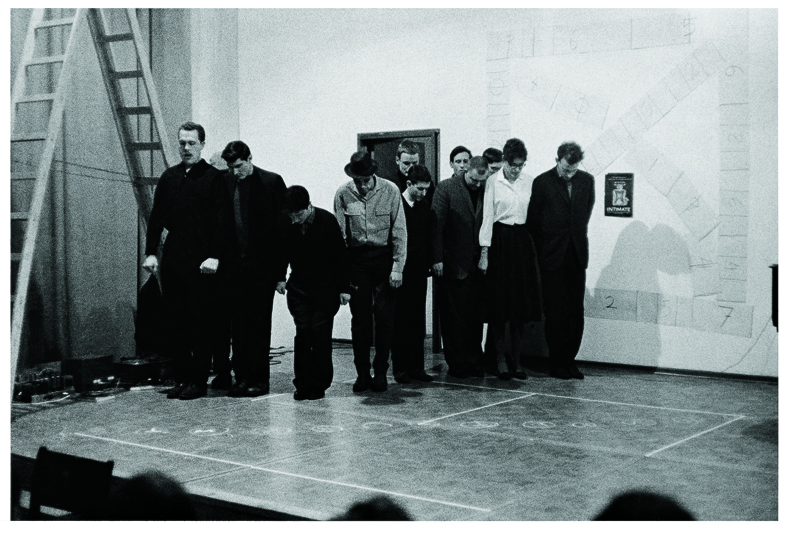The Graphis series, which Dick Higgins began to create in 1958 when he studied with John Cage, is a score in the form of a drawing or a graphic, which resembles the blueprint of an “un-semantic, choreographic” action. Opposing traditional theater that required performers to strictly follow the script, Higgins, who sought ‘abstract’ plays, saw that actions and sound made by the human body could be formed like calligraphy patterns from the environment and materials of the stage: the Graphis series was its record. Over 130 pieces of the series use diverse forms and material. In Festum Fluxorum Fluxus: Musik und Antimusik – Das Instrumentale Theater held at Staatliche Kunstakademie, Dusseldorf in 1963, Graphis 119 was performed. Large wooden blocks were pushed across the stage; Higgins then walked to the stage, followed by Frank Trowbridge, Nam June Paik, Joseph Beuys, Tomas Schmit, Arthur Køpcke, Wolf Vostell, George Maciunas, Daniel Spoerri, and Alison Knowles. All leaning forward and looking at the floor, the performers carefully listened to Higgins reciting his score, Graphis 119.





